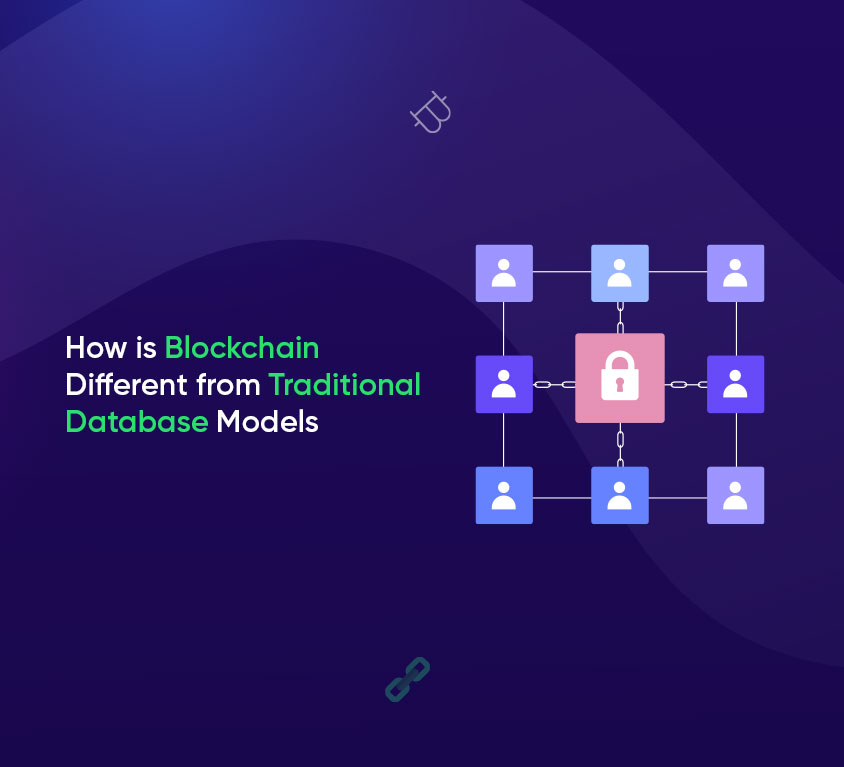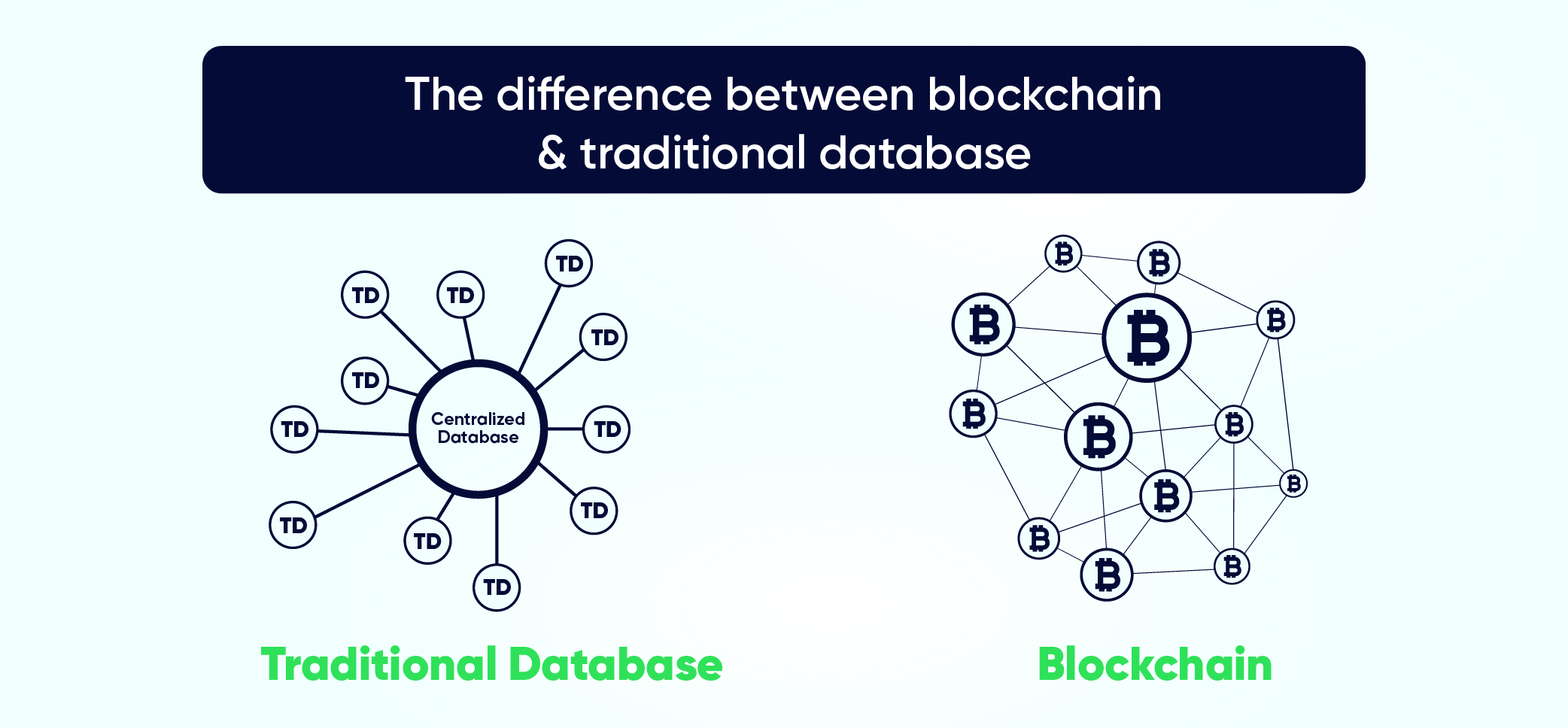
Introduction
Blockchain & Web3 Services Trusted By Leaders
- Develop innovative solutions using our state-of-the-art blockchain expertise.
- Achieve accelerated growth with robust & scalable Web3 consulting.
- Unlock 360-degree security with our top-rated blockchain development.
How is Blockchain Different From Traditional Database Models?
If you are familiar with cryptocurrencies, you undoubtedly already know something about blockchain. Blockchain is the enabling technology that makes sure transactions are precise, open, and unchangeable. But many people ask; how is blockchain different from traditional database models? What makes this technology so crucial? There is always going to be some degree of inconsistency when working with several different stakeholders. Human error is inevitable, even if you absolutely trust the other person. Blockchain development services offer expertise in creating and implementing smart contracts, enabling secure and tamper-proof execution of business transactions.What is a Blockchain?
A chain of transactions makes up a blockchain. This chain keeps track of the transactions that took place and in what sequence. When attempting to avoid duplicate spending (using the same money twice), the order is important. In rounds that might last anywhere from a fraction of a second to many minutes, the computers operating a blockchain agree on this order. For instance, a round of Bitcoin occurs every ten minutes. In today’s digital age, blockchain technology has emerged as a revolutionary force, transforming various industries with its secure and transparent nature. This would be unusably sluggish if the blockchain could only agree on one transaction every ten minutes. As an alternative, they settle on a block of transactions, which is comparable to a page of numerous transactions. They can average numerous transactions per second by deciding on blocks at a time. A blockchain is a series of transactional blocks.What Does a Blockchain Do?
A blockchain stores transactions in a method that is tamper-proof (or very near to it) without requiring faith in any specific person, organization, or device. Without having to rely on a bank, this fulfills the same function as the record of transactions for your bank account.How is Blockchain Different From Traditional Database Models?
 In several crucial respects, blockchain significantly differs from conventional database models:
In several crucial respects, blockchain significantly differs from conventional database models:
1. Decentralization:
Traditional databases are frequently centralized, which means that just one person, group, or organization owns and manages them. Blockchain, in contrast, runs in a decentralized fashion where numerous members uphold and verify the network’s integrity. The lack of a central authority due to this decentralization renders blockchain immune to censorship, manipulation, and single points of failure.
2. Immutable and Impenetrable:
Blockchain maintains an immutable ledger, which means that information entered into the blockchain cannot be changed or removed after it has been published. Traditional databases are vulnerable to unauthorized alterations or manipulation since they can be changed or overwritten. Transactions are validated by numerous parties because of the decentralized consensus mechanism in blockchain, which makes it very challenging.
3. Transparency:
Because it is public or permissioned, blockchain provides transparency. Anyone can monitor and verify transactions on public blockchains, encouraging accountability and trust. Blockchains with permissions grant participants just certain access, protecting their privacy but still preserving trust between authorized parties. Since the database owner controls visibility and access, traditional databases frequently lack this level of openness.
4. Security:
Blockchain uses cutting-edge cryptography methods to protect data and transactions. Consensus methods, digital signatures, and cryptographic hashes are used to guarantee the validity and integrity of data stored on the blockchain. Traditional databases depend on security safeguards like firewalls, access controls, and encryption, which can be breached and subject to unauthorized access.
Blockchain vs Database: Understanding the Difference
Centralization is the main distinction between a blockchain and a database. On a blockchain, each participant has a safe copy of every record and every update, so each user can see the provenance of the data, whereas all records secured on a database are centrally located. Since each member keeps a copy of the records, blockchain technology works its magic whenever there is an inconsistency by instantly identifying and correcting any inaccurate information. Even if a third party purposefully modified your friend’s watch’s time so they would be late, the timing would quickly be checked against everyone else and corrected for daylight saving time.1. Traditional Database
The network architecture used by conventional databases is client-server. Here, data that is kept on a centralized server can be changed by a user (also referred to as a client). A designated authority retains control of the database and authenticates a client’s credentials before granting access. Since this authority is in charge of managing the database, data can be changed or even deleted if the authority’s security is jeopardized.
2. Blockchain Database
Blockchain databases are made up of several independent nodes. Every node takes part in administration; they can all verify fresh blockchain entries and add new data to the database. The majority of nodes must come to an agreement in order for a change to be made to the blockchain. This consensus technique ensures the network’s security and makes it challenging to interfere. In Bitcoin, consensus is reached by mining (solving complex hashing puzzles), while Ethereum seeks to use proof of stake as its consensus mechanism.
Blockchain vs Database
Aspect |
Blockchain |
Database |
|---|---|---|
Data Structure |
Distributed ledger with blocks | Centralized data storage |
Data Integrity |
Immutable and tamper-proof | Subject to modification by authorized users |
Security |
Cryptographic algorithms and consensus mechanisms | Access control and authentication mechanisms |
Decentralization |
A decentralized network of nodes | Centralized control |
Transparency |
Transparent and publicly auditable | Limited transparency |
Consensus Mechanism |
Requires consensus among participants | The central authority manages the consensus |
Data Sharing |
Read access to all participants | Controlled access based on user permissions |
Scalability |
Limited scalability as the entire network processes every transaction | Scalable for large volumes of data and transactions |
Smart Contracts |
Supports programmable logic and automated contract execution | Not native to traditional databases |
Use Cases |
Cryptocurrencies, supply chain management, decentralized applications (dApps) | Enterprise systems, web applications, data management |